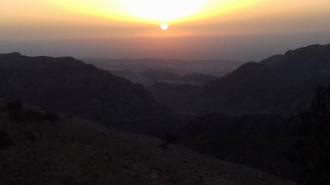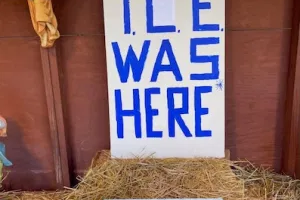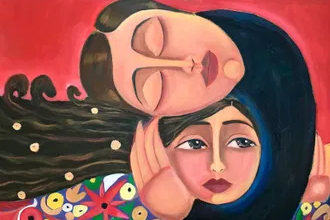Joining The Dots In Jordan

Photo: Fr Rob Esdaile
A Christian pilgrimage to Jordan is certainly an eye-catching proposition, though perhaps not the most obvious undertaking. For, unless you wish to submit to the indignities of Israeli border security at the Allenby Bridge, you are shut out from what we normally call 'The Holy Land'. You also find yourself in a country with relatively few church buildings, other than those unearthed by archaeologists. Usually labelled 'Byzantine' in guide-books, most of these are 'cut off at the knees', their recently excavated walls standing no more than a few feet proud of the dry, rocky soil.
But Jordan is where I spent last week. And being 'shut out' might just be the point. Three high points (and literally so) of any Jordanian pilgrimage are these: standing (as our group did on successive days) close by the cliff at Gadara over which the herd of pigs rushed headlong (Mt 8.2); amidst the ruins of Herod's fortress at Machaerus, where John the Baptist was beheaded; and on Mount Nebo, whence Moses surveyed the land of Canaan before his death. In each place, you stand tantalisingly close to Israel. Yet you are cut off, not only by the Great Rift Valley (of which the Jordan valley and the Dead Sea form a part) but also by the burden of history and by the more recent wounds summed up by the names of Balfour, Naqba and Intifada.
If the initial sense (for the Western Christian) is one of Exile from the Promised Land, gradually the viewpoint changes and the dots are joined. A line of ancient kingdoms, their names familiar from the Old Testament, runs down the ancient spice-route of the Kings' Highway from north to south - Ammon, Moab, Edom. Moses once followed the same path in the opposite direction, having crossed the Red Sea at Aqaba. This (not Sinai) was the land of Israel's forty years of wilderness wanderings - so our Christian guide insisted, time and again. This too is Holy Land, a crucible of Salvation History with much to teach us.
But what of Petra? How does this fit into a Christian pilgrimage, other than as one of the 'Seven New Wonders of the World' and a 'must-see' on any tourist's list? Of course, there is the obligatory ruin of a Byzantine-era church on the edge of the settlement. But back in the older ceremonial heart of the Nabatean capital, the opulence of the sacred architecture (tombs and temples, not habitations) carved into the red-pink sandstone stands in marked contrast to the (presumed) tent-dwelling of most of the population. These were people attached to their nomadic origins (much as Jordan's Bedouin population today). And their ancient reticence in 'illustrating' the divine, shared with the Abrahamic faiths of Judaism and Islam, stands in marked contrast with the rather glib anthropomorphic depictions of Greco-Roman deities at the time. These desert traders seem to have understood long before Muhammad, that God is 'ever-greater', beyond all our imaginings.
Our pilgrimage took us also to the sombre wreck of the Crusader castle of Al-Karak. It was the raiding parties from here which provoked Saladin to orchestrate the final downfall of the Latin Kingdom of Jerusalem in 1189. What to make of that flawed and failed Western dream? He who lives by the sword dies by the sword? At the least, we need to recognise how the imagery of Crusade continues to haunt the world (and blacken Christianity's name in the region) more than eight centuries after its demise. Crossing the German/Ottoman-built Hijaz Railway and visiting the desert base of TE Lawrence reminded us of more recent Western meddling with similarly fateful results.
Meanwhile, despite all the setbacks and obstacles faced, the ancient Christian Church continues to exist, discreetly and faithfully, with important centres in both Madaba and Amman. The local Christian community not only joins with the rest of Jordan in offering remarkable hospitality to roughly two million Syrians, Iraqis and Palestinians (in a population of 9.5 million) but it also shelters in its parishes hundreds of Iraqi and Syrian families who find themselves marginalised and persecuted in the UN refugee camps. Shut out and yet welcoming, the Holy Land beyond the Jordan; the Hashemite Kingdom is indeed a good place to join the dots of Salvation History, in the footsteps of Moses, of Ruth the Moabite and of Jesus himself (baptised at Al-Maghtas, Bethany Beyond the Jordan).
Our trip was organised by Pilgrimage People, a not-for-profit agency which supports the Christian community and peace projects in Israel-Palestine and Jordan. For more information see: www.pilgrimagepeople.org
See also: ICN 15 August 2017 - Fr Rob Esdaile, Song of Life and Death: www.indcatholicnews.com/news/33188
and ICN 21 July 2017 - Film: Another News Story www.indcatholicnews.com/news/33027


















